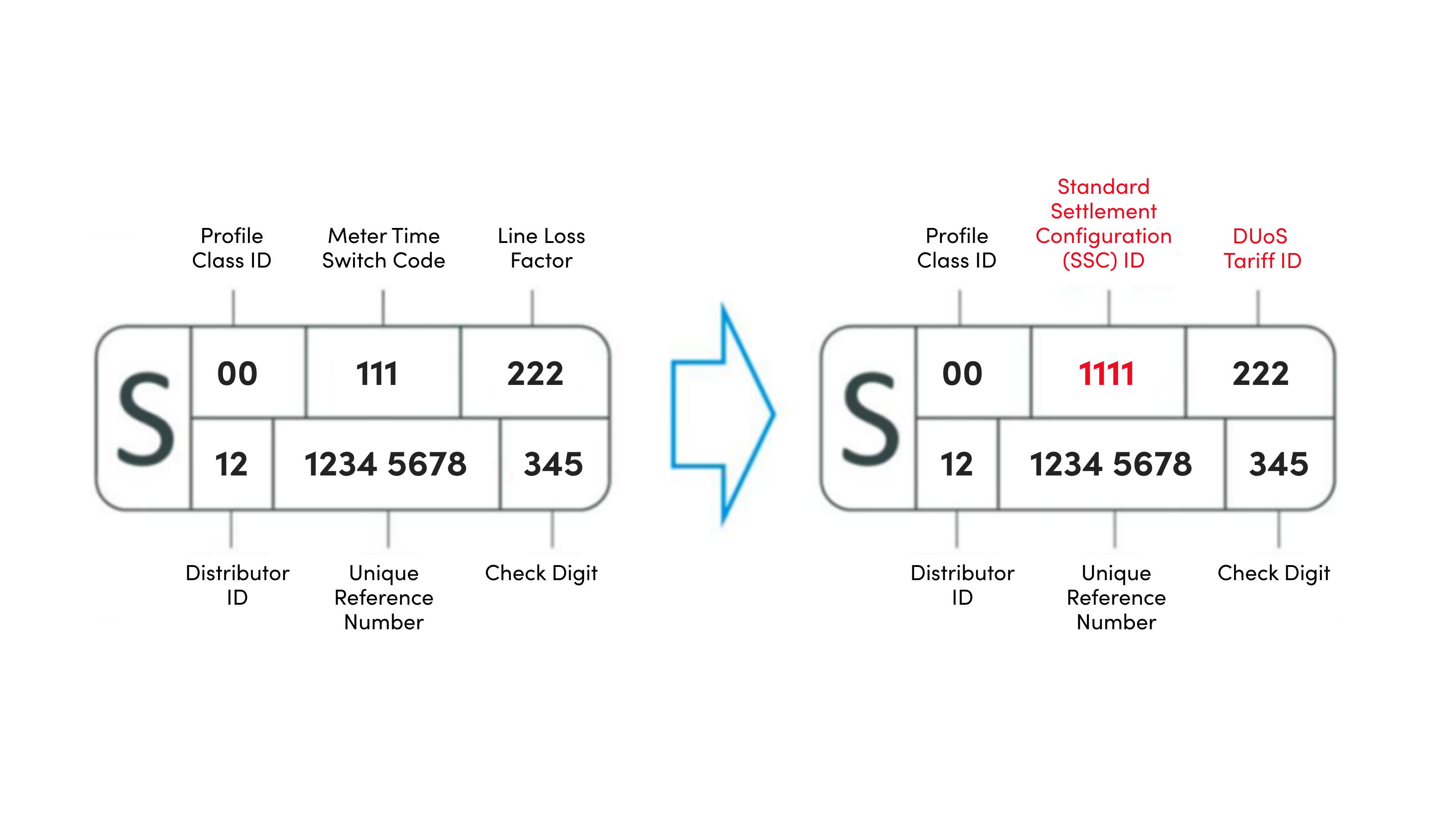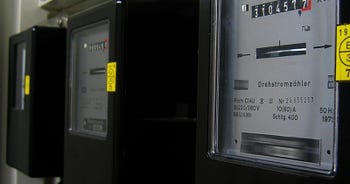What is Market-Wide Half Hourly Settlement (MHHS) and what does it mean for your home and business?
Market-wide Half-Hourly Settlement (MHHS) is a UK energy market reform that will require all electricity usage to be settled using half-hourly (every 30 minutes) data.
Led by Ofgem, the energy regulator, MHHS transforms how suppliers pay for electricity by matching what customers actually use every half hour, instead of using estimates from manual meter readings or daily smart meter data.

What is energy settlement?
Energy settlement is the process used to compare and financially balance the amount of electricity suppliers buy from generators with what customers actually use. This helps ensure customer bills are accurate and suppliers are compensated or charged for any shortfalls or excesses in their contracted electricity.
What are the MHHS timelines and rollout schedule?
The MHHS rollout started in September 2025 and is set to be complete by May 2027. Where possible, the rollout will involve older meter types being replaced with modern smart meters that transmit half-hourly readings.
If you don’t have a smart meter, you’ll still be switched to half-hourly settlement based on annual consumption, property type and usage intensity.
The transition is scheduled to be complete by the end of 2027, when all electricity meters – whether in business premises or domestic homes - will shift to half-hourly settlement.
This phased move to half-hourly settlement will enable real-time updates and more precise billing. It’s also part of the UK’s wider energy strategy to support the ongoing expansion of smart meters, decarbonisation, and consumer choice.
MHHS rollout at a glance
- September 2025 - Migration of all electricity supply points to MHHS arrangements over the next 18 months
- October 2026 - MHHS aims for all trading and settlement to use half-hourly data for domestic and business customers
- May 2027 - MHHS should be fully live, with ongoing refinements and transition support from Ofgem, Elexon, and industry partners.
Although the rollout will happen mainly behind the scenes, meaning you’ll need to do very little (if anything), it’s important to understand what’s changing, why it matters, and how it will affect you. Here’s all you need to know.
What does MHHS mean for consumers?
For business energy customers, MHHS means smarter billing systems, more opportunities to benefit from time-of-use pricing, and operational changes that affect energy procurement and contract management.
Whether you look after the energy bills at your business, at home, or both, here’s all you need to know about how the MHHS changes will affect you.
Smarter, more accurate billing
Under MHHS, every electricity meter will be settled on a half-hourly basis. This means your consumption data will be captured in 30-minute intervals, resulting in bills that more closely match your actual usage.
The old system, based on estimated or periodic readings, is replaced by near real-time settlement. This will provide greater transparency and fewer surprises when your bill arrives.
For businesses, this should mean access to more tailored tariffs and better cost control, especially if your business has shift-based energy use or uses a time-of-use tariff.
Domestic customers will also benefit from more accurate billing and the chance to adapt consumption to time-of-use tariffs as they become available.
More innovative tariffs and choice
The market-wide half-hourly settlement framework encourages suppliers to design new, innovative tariffs, especially time-of-use products. These new tariff structures reward users who shift their energy consumption away from peak periods or take advantage of cheaper rates at certain times of the day. This means businesses and households can save money by using electricity more selectively.
The future of smart meters
Smart meters are integral to MHHS. While it is strongly recommended that all customers upgrade to a smart meter to access the full benefits of MHHS, even those without one will be treated as half hourly customers. This will be done based on your annual consumption, property type and usage intensity.
But customers without a smart meter may find it harder to access new tariffs or fully benefit from half-hourly metering.
Contract and billing changes
The rollout of MHHS means there will be visible changes to your home and business electricity contracts and bills:
- Customer contracts and bills will reflect new settlement arrangements.
- Key identifiers such as MPANs will be updated.
- Profile classes will gradually phase out as meters are upgraded. This means the profile class on new migrated meters will be blank or 00, but will remain the same otherwise.
- Information on your MPAN will change. The Standard Settlement Configuration (SSC) will replace Meter Time Switch Codes (MTC), and the Distribution Use of System (DUoS) Tariff ID will replace Line Loss Factors (LLF), as below
How your MPAN will change with MHHS

Both business energy and domestic energy customers will see new terminology and formats on future paperwork, including supplier bills and contracts issued after September 22, 2025.
Why is market-wide half-hourly settlement happening?
The MHHS programme is designed to modernise and futureproof the UK’s electricity market. Its main goals are:
- Improved accuracy - By using more regular consumption data, the entire energy chain - generators, suppliers, and consumers - can benefit from more precise forecasting, billing, and efficiency.
- Greater flexibility - MHHS supports the move to a flexible, net-zero electricity grid that will help balance supply and demand. Customers will benefit from more flexible tariff options.
- More transparency - With half-hourly settlement, consumers are empowered with more information and more choice, helping them to make smarter decisions and ultimately save money.
What should businesses do to prepare?
- Check your meter - Ensure you have a smart meter or arrange for an upgrade through your supplier.
- Review contract terms – Be on the lookout for any updates from your supplier that highlight changes to contracts, formats, or costs.
- Consider a new tariff - Speak with your broker or use comparison services to determine whether a time-of-use tariff could save you money.
Specific changes to broker and supplier systems
- Broker portals and supplier matrix tools will be updated throughout late 2025 and into 2026, depending on your provider.
- Manual pricing and quotes may need conversions between legacy codes (MTCs) and the new formats (SSCs and DUoS Tariff IDs) outlined above.
- Profile classes will phase out as meters are migrated; all migrated meters will be left blank or reclassified as 00 in line with half-hourly settlement requirements.
- Any new paperwork, contracts, or bills issued after September 22, 2025, will show these changes.
What will change for domestic energy customers?
Domestic customers, including households and small businesses on residential rates, will also see some changes, including:
- Smarter, more tailored tariffs—allowing households to opt for time-of-use or dynamic pricing and reduce costs.
- Better information supporting energy-saving behaviour and flexibility.
- Simplified contract language and new terms reflecting the half-hourly settlement process.
It's unlikely domestic users will notice any differences aside from the technological upgrade, but understanding the new terms and ensuring a smart meter is installed will help to get the most out of the changes.
Frequently asked questions about MHHS
Here's a quick Q&A for any outstanding quesions you might have about the MHHS rollout
What is MHHS in simple terms?
MHHS stands for market-wide half-hourly settlement, an industry-wide upgrade that ensures all electricity consumption is measured and billed in half-hourly periods, driving smarter billing, innovation, and savings.
Why is the MHHS programme necessary?
It enables more accurate, fair, and flexible energy billing for everyone, helping to facilitate a low-carbon, responsive energy system and a wider range of tariffs for all customers.
Do I need a smart meter for MHHS?
A smart meter is strongly recommended, as it allows for fully automated and more regular readings, enabling the full benefits of half-hourly settlement. If you don't have a smart meter, you’ll still be settled on a half-hourly basis, but with less up-to-date data.
How will MHHS affect my energy contract?
You’ll notice changes to contract language and fields, particularly on your Meter Point Administration Number (MPAN), which is the unique identity reference number for your electricity meter. Bills and contracts issued after September 22, 2025, will reflect these changes.
What should I do next?
Check with your energy supplier or broker about your meter status. It’s worth asking about time-of-use or other innovative tariffs to help make the most of the new technology. For business customers, keep in touch with your supplier or business energy broker for updates to portals and matrix tools.








